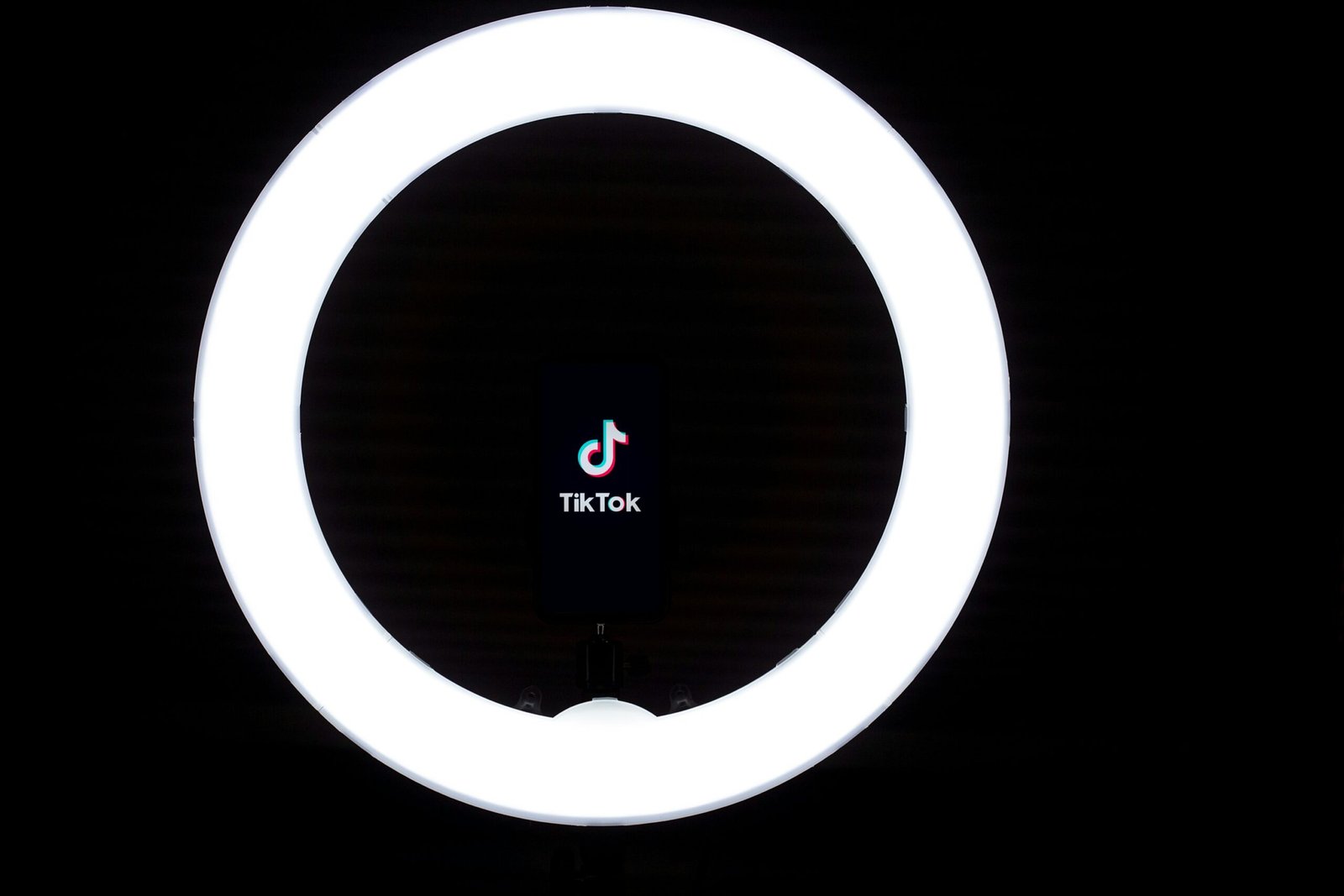
How to Create a Social Media Ad That Sells
Understanding Your Target Audience
Identifying and understanding your target audience is a crucial first step in creating a social media ad that effectively sells. Start by gathering demographic information such as age, gender, income level, and interests. This data provides a foundation for understanding who your potential customers are and what they might be looking for. For example, younger audiences might be more interested in trendy, visually appealing content, while older demographics might prioritize informational and value-driven messaging.
Market research plays a vital role in this process. Utilize tools like surveys, focus groups, and social media analytics to collect data on your audience. Platforms such as Facebook Insights and Google Analytics can offer valuable insights into your audience’s behavior, preferences, and online activity. These tools help you segment your audience into distinct groups, allowing you to create more personalized and targeted ad campaigns.
Once you have a clear picture of your target audience, it’s important to tailor your ad content to resonate with them. Use the gathered data to craft messages that address the specific needs and desires of your audience segments. For instance, if your target audience is environmentally conscious millennials, emphasize the eco-friendly aspects of your product. If you’re targeting high-income professionals, highlight the premium quality and exclusivity of your offerings.
Additionally, consider the tone and style of your ad. The language, visuals, and overall presentation should align with what appeals to your audience. A well-crafted ad that speaks directly to the interests and pain points of your target audience is more likely to capture their attention and drive engagement. By thoroughly understanding your audience, you can create social media ads that are not only eye-catching but also compelling and effective in driving sales.
Setting Clear Objectives
Defining the primary goal of your social media ad is a crucial first step in crafting a campaign that truly resonates with your target audience. Whether your objective is brand awareness, lead generation, or direct sales, having a clear and measurable goal is paramount. Each type of objective demands a different approach and strategy, making it essential to pinpoint your aim from the outset.
Setting clear objectives helps in creating focused ad content. For instance, if your goal is brand awareness, your ad should emphasize the unique aspects of your brand, utilizing engaging visuals and compelling narratives to capture attention. On the other hand, an ad aimed at lead generation might focus more on providing value through downloadable content, webinars, or free trials, prompting users to share their contact information. Direct sales-oriented ads, meanwhile, would benefit from showcasing product benefits, special offers, and calls to action that encourage immediate purchases.
Clear objectives not only guide the content and design of your social media ad but also play a pivotal role in measuring the success of the campaign. By establishing specific, quantifiable goals, you can track key performance indicators (KPIs) like click-through rates, conversion rates, and return on ad spend (ROAS). These metrics offer invaluable insights into the effectiveness of your ad, allowing for data-driven adjustments and optimizations. This iterative process ensures that your campaign remains aligned with your business goals and maximizes its impact.
Moreover, well-defined objectives facilitate better communication and alignment within your team. When everyone understands the primary goal, from the creative designers to the marketing analysts, collaboration becomes more efficient and cohesive. This shared understanding fosters a unified effort towards achieving the set objectives, ultimately enhancing the overall success of the social media ad campaign.
Crafting Compelling Ad Copy
Creating ad copy that captures attention and drives action involves several key elements. At the forefront is the headline, which serves as the first point of contact between your ad and potential customers. A strong headline should pique curiosity, provide a clear value proposition, or highlight a benefit that resonates with your target audience. It’s essential to keep it concise and relevant while ensuring it aligns with the overall message of your ad.
The body of your ad copy should build on the promise made in the headline. Here, clarity is paramount. Ensure that the value proposition is straightforward and easily understood. Use language that speaks directly to your audience’s needs and desires. Avoid jargon and complex terminology that might alienate or confuse the reader. Instead, opt for simple, persuasive language that emphasizes the benefits of your product or service.
A persuasive call-to-action (CTA) is another crucial element of effective ad copy. The CTA should clearly instruct the audience on the next steps, whether it’s to “Buy Now,” “Learn More,” or “Sign Up Today.” The language used should be compelling and create a sense of urgency or exclusivity. For example, phrases like “Limited Time Offer” or “Exclusive Deal” can motivate potential customers to act quickly.
The tone of your ad copy also plays a significant role in engagement. It should reflect your brand’s voice while resonating with your target audience. A friendly, conversational tone can be effective for B2C ads, while a more formal tone might be suitable for B2B ads. Tailoring the tone to your audience helps establish a connection and builds trust.
Lastly, keep your ad copy concise and to the point. In the fast-paced world of social media, users typically skim through content quickly. Ensure that your message is delivered effectively within a limited word count. Use bullet points or short paragraphs to break up the text and make it easily digestible. By focusing on these elements, you can create ad copy that not only grabs attention but also drives conversions.
Designing Eye-Catching Visuals
High-quality visuals play a pivotal role in capturing the audience’s attention in social media advertising. The human brain processes images significantly faster than text, making compelling visuals essential for effective communication. When designing images and videos, several best practices can enhance their impact and ensure they resonate with your target audience.
Color psychology is a fundamental aspect of visual design. Different colors evoke different emotions and reactions. For instance, red can create a sense of urgency, while blue often conveys trust and calmness. By understanding the emotional triggers associated with various colors, marketers can craft visuals that align with their campaign goals. It’s crucial to choose a color palette that not only grabs attention but also reflects the brand’s personality.
Composition is another critical factor. A well-composed image or video directs the viewer’s eye to the essential elements of the ad. Techniques such as the rule of thirds, leading lines, and focal points can significantly enhance visual appeal. Ensuring that your visuals are well-balanced and free of clutter helps maintain the audience’s focus on the central message of the ad.
Incorporating branding elements consistently across all visuals strengthens brand identity. Logos, specific fonts, and unique design elements should be integrated seamlessly into the ad’s visuals. This consistency helps in building brand recognition and trust over time. It’s important to ensure that these elements are not overwhelming but rather complement the overall design.
Consistency in visual design with your overall brand identity cannot be overstated. Every ad should feel like a natural extension of your brand’s story. Maintaining a cohesive style across all marketing materials, including social media ads, reinforces your brand’s presence and makes it more memorable to the audience. By adhering to these best practices in designing visuals, marketers can create ads that not only attract but also engage and convert viewers.
Choosing the Right Social Media Platform
In the realm of social media advertising, selecting the appropriate platform is pivotal to the success of your campaign. Each social media platform harbors a unique audience, accompanied by distinct content consumption habits. Understanding these nuances is essential for aligning your campaign objectives with the right platform.
Facebook, for instance, boasts a diverse user base, making it a versatile choice for various types of content. It supports a wide array of ad formats, including image, video, carousel, and slideshow ads. Facebook’s advanced targeting options allow advertisers to reach specific demographics, interests, and behaviors, making it ideal for detailed audience segmentation.
Instagram, predominantly populated by a younger audience, emphasizes visual content. High-quality images and short videos perform exceptionally well here. Leveraging Instagram Stories and IGTV can enhance engagement, as these features cater to the platform’s preference for ephemeral and longer-form content, respectively. Brands targeting Millennials and Gen Z should consider Instagram’s visual-centric approach.
LinkedIn, on the other hand, caters to professionals and B2B advertising. Content that resonates well includes industry insights, professional tips, and company updates. LinkedIn’s Sponsored Content and InMail provide opportunities to engage with decision-makers, making it a prime choice for lead generation in professional networks.
Twitter, known for its fast-paced nature, is suitable for real-time engagement and concise messaging. Tweets, promoted tweets, and Twitter ads can capitalize on trending topics and hashtags to amplify reach. This platform is particularly effective for news updates, promotions, and customer service interactions.
Pinterest’s user base, largely comprising individuals seeking inspiration, is perfect for visually appealing and creative content. Promoted Pins and Rich Pins can drive traffic and conversions, especially for lifestyle, DIY, and e-commerce brands. Pinterest’s visual search capabilities further enhance product discovery.
In summary, the right social media platform hinges on your target audience and campaign goals. By understanding the strengths of each platform and tailoring your content accordingly, you can optimize your social media ads for maximum impact and engagement.
Implementing Effective Targeting Strategies
When creating a social media ad that sells, implementing effective targeting strategies is crucial. Social media platforms offer a myriad of targeting options designed to help advertisers reach their desired audience with precision. These options include targeting based on demographics, interests, behaviors, and custom audiences.
Demographic targeting allows you to reach users based on characteristics such as age, gender, location, language, and income level. For instance, if you are advertising a high-end luxury product, targeting higher-income brackets might yield better results. Interests targeting, on the other hand, focuses on specific hobbies, activities, and preferences. This approach is particularly useful for niche markets, as it allows you to connect with users who have shown a genuine interest in related topics.
Behavioral targeting takes into account users’ past actions on social media platforms and other websites. This can include their purchasing behaviors, device usage, and even travel patterns. By analyzing these behaviors, you can tailor your ads to match the specific needs and preferences of your audience, increasing the likelihood of conversion. Additionally, custom audiences enable advertisers to target users who have previously interacted with their brand, such as website visitors or email subscribers. This method is effective for retargeting campaigns aimed at re-engaging users who have already shown interest in your products or services.
Creating segmented ad groups is another vital aspect of effective targeting. By dividing your audience into smaller, more focused groups based on the aforementioned criteria, you can craft personalized ad messages that resonate with each segment. For example, you might create different ads for first-time visitors and returning customers, or for users from different geographic regions.
Furthermore, A/B testing is indispensable in refining your targeting strategies. By running multiple versions of your ads with slight variations in targeting settings, you can identify which combinations yield the best results. Analyzing performance data from these tests allows for continuous optimization, ensuring that your ads remain effective and relevant over time.
Setting and Managing Your Budget
When creating a social media ad that sells, one of the most critical steps is setting and managing your budget effectively. Allocating your budget strategically can significantly influence the success of your campaign. Begin by determining the overall amount you are willing to spend and then break it down into daily or weekly limits. This approach helps in maintaining control over your expenditures and allows for easier adjustments as your campaign progresses.
Different bidding strategies play a pivotal role in how your budget is spent. For instance, Cost-Per-Click (CPC) bidding means you pay each time someone clicks on your ad, which can be beneficial if your primary goal is to drive traffic to your website. Alternatively, Cost-Per-Thousand Impressions (CPM) focuses on the number of times your ad is shown, making it ideal for brand awareness campaigns. Understanding the implications of each strategy and aligning them with your campaign objectives ensures that your budget is used efficiently.
Monitoring your ad spend is crucial to ensure that you are getting the desired results from your investment. Regularly reviewing your campaign performance allows you to identify which ads are performing well and which ones need optimization. Adjust your budget accordingly to allocate more funds to high-performing ads while reducing spend on underperforming ones. This dynamic adjustment helps in maximizing your return on investment (ROI).
Utilizing tools and techniques for tracking ROI is indispensable for maintaining cost-effectiveness. Platforms such as Facebook Ads Manager, Google Analytics, and third-party tools like Hootsuite or Buffer provide detailed insights into your ad performance. These tools can track metrics such as click-through rates, conversion rates, and overall engagement, offering a comprehensive view of your campaign’s effectiveness. Leveraging this data, you can make informed decisions to refine your strategy and ensure optimal use of your budget.
Analyzing and Optimizing Ad Performance
In the realm of social media advertising, understanding the efficacy of your ad campaigns is paramount. Evaluating ad performance begins with tracking key metrics such as click-through rates (CTR), conversion rates, and engagement levels. These metrics serve as vital indicators of how well your ads resonate with the target audience and drive desired actions.
Click-through rates measure the percentage of users who click on your ad after seeing it. A high CTR suggests that the ad is compelling and relevant to viewers. Conversely, a low CTR may indicate that the ad copy or visuals need improvement. Conversion rates, on the other hand, reveal the percentage of users who complete a specific action, such as making a purchase or signing up for a newsletter, after clicking on the ad. This metric is crucial for understanding the ad’s effectiveness in driving tangible results.
Engagement levels, which include likes, shares, and comments, provide additional insights into how users interact with your ad content. High engagement can enhance the ad’s visibility through social sharing, while also indicating a strong connection with the audience. Regular analysis and reporting of these metrics are essential to identify trends, measure success, and pinpoint areas for improvement.
To optimize underperforming ads, several strategies can be employed. Tweaking ad copy to make it more persuasive or aligning it better with the audience’s interests can significantly boost performance. Adjusting targeting parameters to ensure the ad reaches the most relevant demographic is another critical step. Experimenting with different formats, such as videos, carousel ads, or sponsored posts, can also provide valuable insights into what resonates best with your audience.
The process of optimizing ad performance is a continuous cycle of testing, learning, and improving. Regularly updating your strategy based on data-driven insights ensures that your social media ads remain effective and continue to drive results. By staying vigilant and adaptable, you can maximize the return on investment for your social media advertising efforts.

